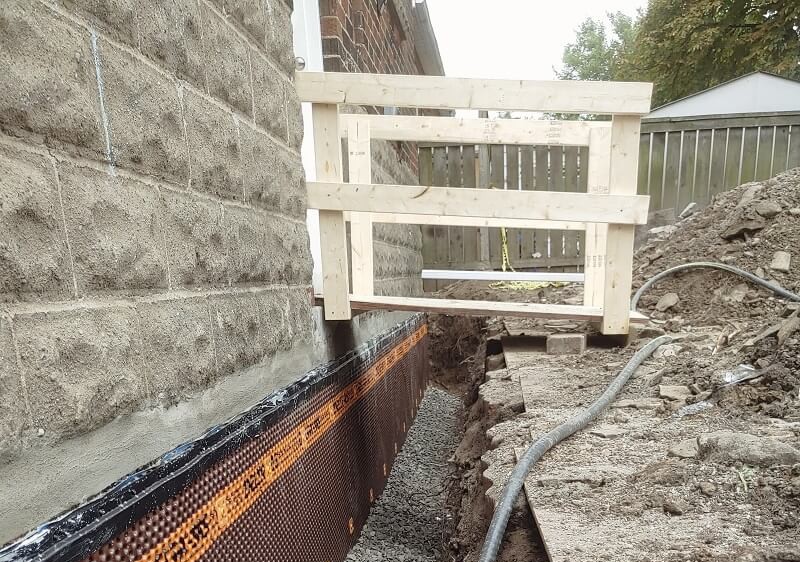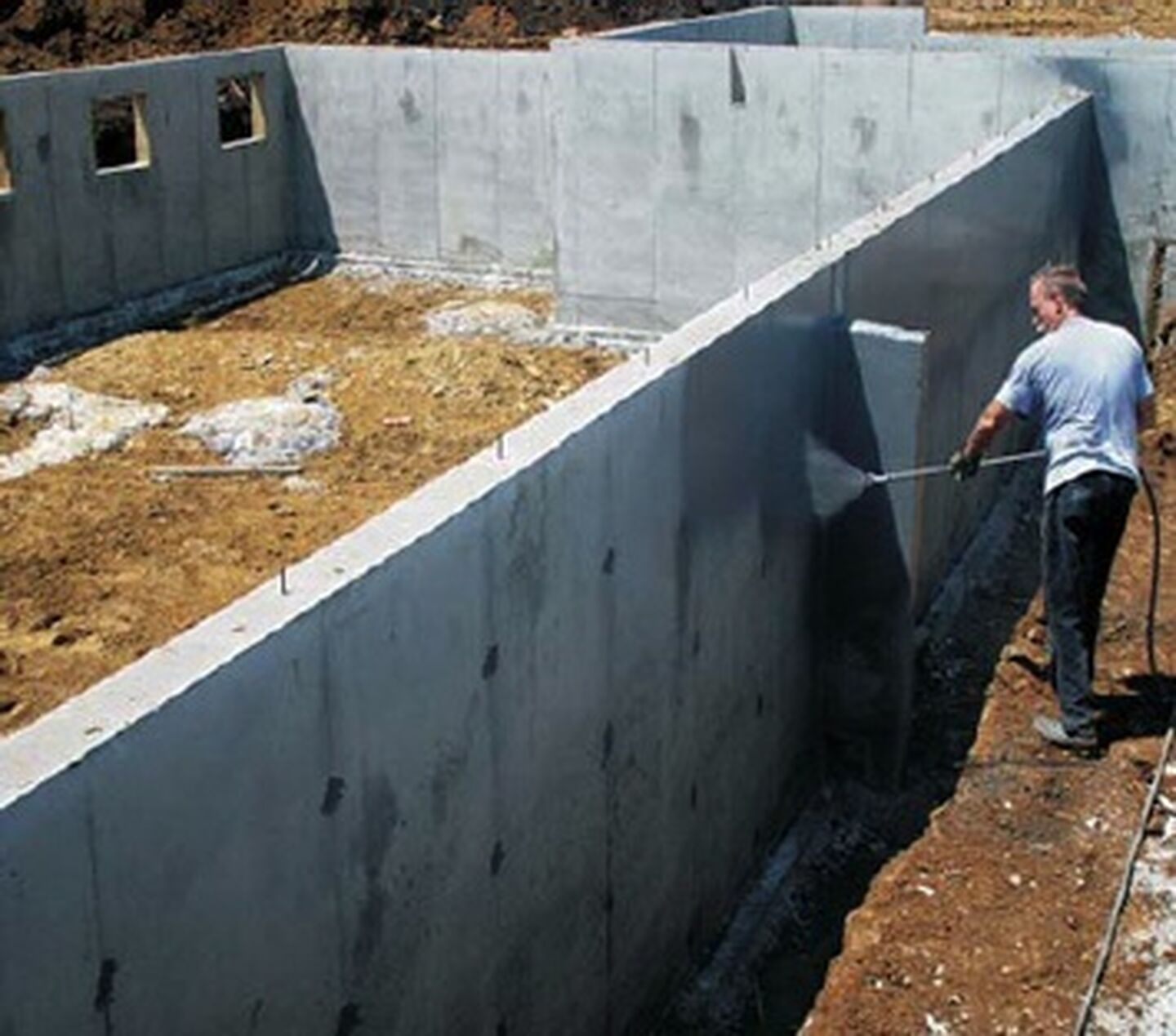Time-tested tips for damp specialist newcastle to protect your building's structure
Time-tested tips for damp specialist newcastle to protect your building's structure
Blog Article
Recognizing the Significance of Damp Proofing in Stopping Structural Damage
Damp proofing works as an important protection versus wetness infiltration in buildings. This safety measure can protect against significant structural damage, yet several homeowner continue to be uninformed of its significance. Identifying the indicators of wetness and recognizing the different services available can be necessary. Neglecting moist proofing can lead to serious repercussions. What are the particular dangers and options that residential property owners should consider?
What Is Damp Proofing and Just How Does It Function?
Wet proofing works as an important barrier against moisture invasion in buildings. damp removal newcastle. This procedure entails applying details materials and strategies to avoid water from permeating wall surfaces, floorings, and various other architectural components. Typically, moist proofing can be achieved through the installment of wet evidence membrane layers, finishes, or the usage of specialized sealants.These methods work by developing a safety layer that hinders dampness motion, ensuring that the indoor atmosphere stays healthy and dry. Moist proofing is specifically important in locations prone to high moisture or groundwater, as it aids maintain the integrity of the structure over time.Moreover, reliable moist proofing adds to power efficiency by preventing warm loss related to moist atmospheres. By addressing possible dampness issues before they rise, damp proofing acts as an aggressive step in protecting buildings from the destructive results of water damage, ultimately prolonging their life expectancy and keeping their value
Typical Signs of Wetness in a Structure
Moisture concerns within a building can materialize with a number of noticeable indicators that indicate the presence of moisture. One prominent indication is the look of water spots on wall surfaces or ceilings, which frequently indicates wetness infiltration. Additionally, peeling off or bubbling paint can suggest that excess moisture is trapped under the surface, resulting in deterioration. Another usual sign is the existence of mold and mildew and mold, which prosper in damp conditions and can typically be identified by their mildewy odor. Moreover, a rise in moisture levels can cause condensation on windows and other surface areas, highlighting moisture issues. Finally, warped or unequal floor covering may signal underlying wetness that jeopardizes structural stability. Acknowledging these indicators early can help mitigate possible damages and preserve a risk-free living environment. Normal assessments and prompt activity are important in resolving dampness problems before they intensify.
The Threats of Overlooking Damp Proofing
Ignoring wet proofing can bring about considerable risks to a building's structural integrity, as wetness accumulation might weaken walls and structures. In addition, extended wetness develops a setting for mold growth, posing serious wellness risks to passengers. Addressing these dangers is important for making certain both safety and long life of the home.
Architectural Integrity Threats
When homeowners overlook the relevance of efficient damp proofing, they expose their buildings to significant architectural stability threats. Prolonged dampness seepage can lead to the development of mold, which deteriorates foundational aspects and can compromise general security. Additionally, excess wetness can wear down concrete and brickwork, resulting in cracks and structural failings. Timber components are especially prone; they can rot and lose load-bearing capability, positioning serious risks to the building's framework. Additionally, untreated wet problems may draw in bugs, such as termites, which further intensify architectural deterioration. Ultimately, ignoring moist proofing procedures can cause costly repair services and potential safety and security hazards, highlighting the vital duty of positive wet monitoring in protecting the integrity of homes.
Health Risk Problems
How can a relatively minor oversight lead to significant wellness threats? Disregarding moist proofing can create an atmosphere favorable to mold growth, which positions substantial health hazards. Mold spores can activate sensitive reactions, respiratory concerns, and various other wellness issues, especially in vulnerable populaces such as children, the elderly, and people with pre-existing conditions. In addition, consistent dampness can draw in pests like rodents and insects, which bring diseases that better endanger health. The visibility of moisture also adds to a decline in interior air quality, exacerbating bronchial asthma and various other respiratory disorders. The failure to address damp issues not only endangers structural stability but additionally endangers the health of residents, highlighting the essential need for efficient wet proofing procedures.
Different Kinds Of Damp Proofing Solutions
Although different elements can add to damp problems in buildings, choosing the suitable wet proofing solution is important for maintaining structural integrity. Numerous alternatives are available, each tailored to details conditions.One common option is a damp-proof membrane layer (DPM), typically made from polyethylene or bitumen, which is set up in floorings and walls to avoid dampness access. Another option is damp-proof programs (DPC), which are layers of waterproof material placed within walls to block climbing damp.Chemical damp proofing entails infusing waterproofing chemicals right into walls to create an obstacle versus wetness. Additionally, external therapies such as tanking, which includes applying a waterproof layer to the outside of structures, can be effective in avoiding water penetration.Each service has its benefits and is chosen based upon the structure's details concerns, environmental problems, and lasting upkeep factors to consider, ensuring perfect protection versus damp-related damages.

The Price of Damp Damages vs. Avoidance
Comprehending the financial effects of wet damage contrasted to avoidance highlights the significance of aggressive actions. The prices linked with wet damages can be significant, consisting of repair work to structural aspects, mold and mildew removal, and potential health-related costs. Home owners may encounter significant financial pressure if considerable damages occurs, resulting in boosted insurance costs and shed building value.In comparison, investing in wet proofing options is commonly even more economical. Initial costs for avoidance methods, such as improving or setting up damp-proof membrane layers drainage systems, are usually outweighed by the lasting cost savings from avoiding pricey repair services. Furthermore, protecting against damp concerns can enhance a building's overall worth and charm, making it a wise investment. When examining the cost of moist damage versus avoidance, it becomes clear that taking positive actions can safeguard monetary passions and preserve the integrity of the building gradually.
Picking the Right Damp Proofing Approach for Your Residential property
Which damp proofing approach is most appropriate for a particular property often relies on numerous elements, including the building's age, existing moisture problems, and regional environmental problems. For older structures, traditional approaches such as asphalt membranes or cementitious coatings might be extra reliable, as they can give a robust obstacle against increasing damp. On the other hand, more recent buildings could gain from modern services like infused damp-proof programs, which are much less invasive and can be customized to particular dampness challenges.Additionally, residential properties in areas with high water tables or hefty rainfall might require even more sophisticated methods, such as dental caries wall drainage systems or external waterproofing. Property owners ought to likewise think about the specific materials utilized in their structure's building, as some methods might not be compatible. Eventually, a complete assessment by a professional can direct residential or commercial property owners in selecting the most effective moist proofing approach customized to their unique conditions.
Maintaining Your Damp Proofing System With Time
Regular upkeep of a wet proofing system is vital for guaranteeing its long-term effectiveness and shielding a residential property from moisture-related damages. Residential or commercial property owners should carry out routine evaluations to identify any signs of wear or concession in the damp proofing layer. This consists of monitoring for fractures, peeling off paint, or mold and mildew development, which may suggest wetness intrusion.Additionally, it is suggested to clean rain gutters and downspouts on a regular basis to avoid water accumulation around the foundation. If degeneration is observed.Engaging specialist services for regular assessments can better enhance the longevity of the system, reapplying membranes or sealants might be necessary. These specialists can provide insights right into prospective susceptabilities and recommend timely fixings.
Frequently Asked Concerns
For How Long Does Damp Proofing Treatment Last Prior To Needing Fixings?
The longevity of wet proofing treatment usually varies from 10 to three decades, depending upon elements such as the method made use of, environmental conditions, and upkeep practices. Normal examinations can aid identify when repair work might be essential.
Is DIY Damp Proofing Effective Compared to Professional Solutions?
The performance of DIY wet proofing varies considerably. mould treatment newcastle. While some individuals may accomplish adequate outcomes, specialist services typically ensure comprehensive services, leveraging proficiency and top quality materials to stop future issues a lot more accurately than a lot of do it yourself attempts
Can Damp Proofing Improve Indoor Air Quality?
The inquiry of whether damp proofing can improve interior air high quality emerges regularly. Efficient moist proofing decreases dampness degrees, thus reducing mold and mildew development and irritants, eventually adding to a much healthier indoor environment for occupants.
Are There Certain Rules for Damp Proofing in Different Locations?
Laws for moist proofing differ by region, commonly influenced by neighborhood building regulations and environmental conditions. Compliance assurances effective dampness control, advertising and safeguarding structures security, which highlights the need for adherence to these details policies.

What Are the Long-Term Conveniences of Proper Damp Proofing?
The long-term benefits of proper moist proofing include improved architectural stability, decreased maintenance prices, improved interior air high quality, and raised home value. These benefits add to a healthier living environment and long term life expectancy of structures. Normally, wet proofing can be achieved via the installment of wet evidence membranes, finishes, or the use of specialized sealants.These techniques work by developing a safety layer that inhibits dampness movement, guaranteeing that the interior atmosphere continues to be healthy and balanced and dry. Wet proofing is specifically important in areas vulnerable to high humidity or groundwater, as it aids preserve the integrity of the framework over time.Moreover, efficient wet proofing contributes to power effectiveness by stopping warm loss associated with damp environments. Overlooking damp proofing can lead to substantial risks to a building's architectural stability, as moisture buildup might deteriorate foundations and walls (mould removal newcastle). Different factors can contribute to damp issues in structures, selecting the ideal wet proofing solution is necessary for preserving architectural honesty. Which damp proofing method is most ideal for a certain building here typically depends on different factors, consisting of the structure's age, existing moisture problems, and local ecological conditions
Report this page